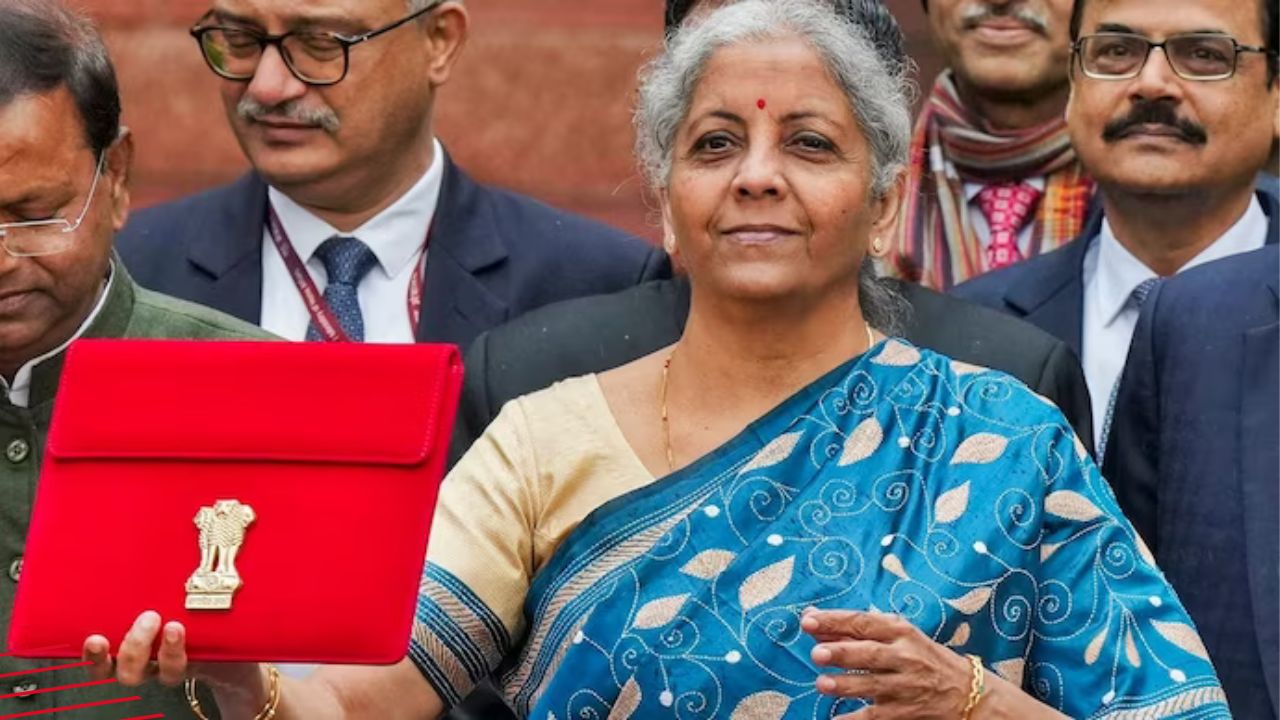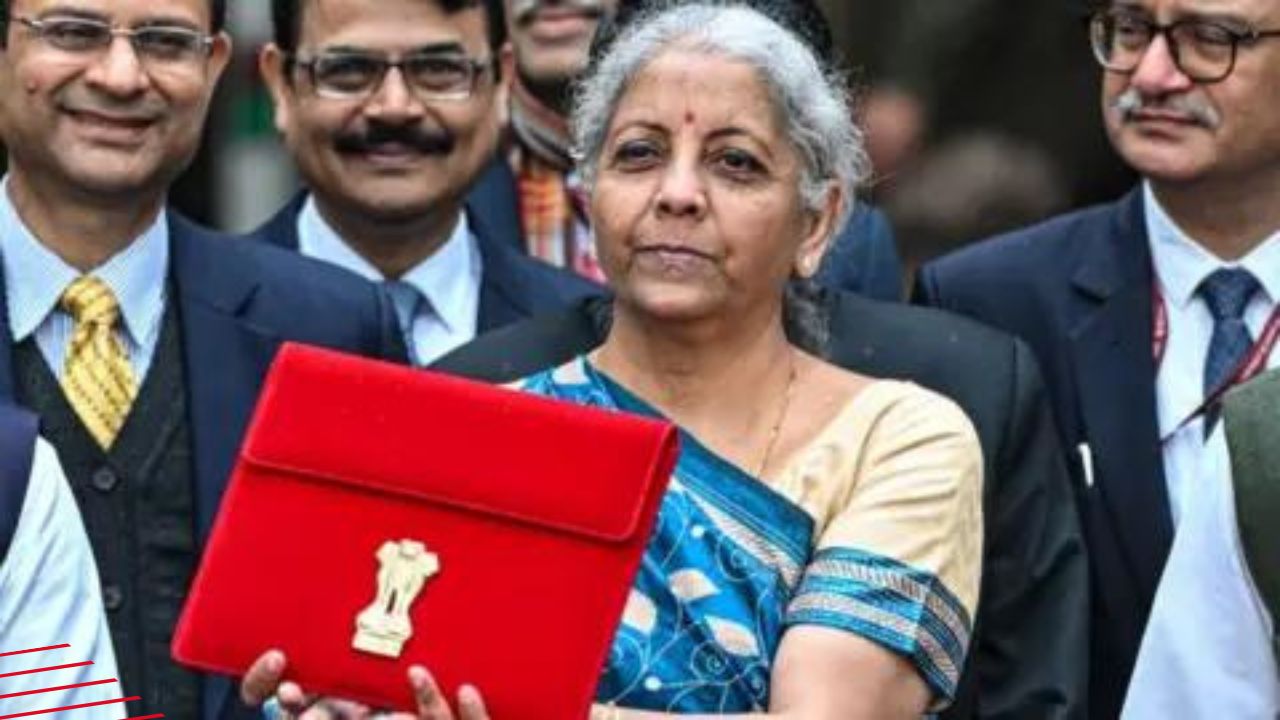Indian Budget 2024 - A Comprehensive Overview

Confused about the Indian Budget 2024? Get clarity on its impact on YOU! Explore allocations, tax updates, and expert analysis. Read and empower yourself!
Indian Budget 2024

Confused about the Indian Budget 2024? Get clarity on its impact on YOU! Explore allocations, tax updates, and expert analysis. Read and empower yourself!
Indian Budget 2024
The Indian Budget is a much-anticipated annual event, holding immense significance for the nation's economic trajectory. It outlines the government's spending plans, revenue generation strategies, and key policy changes for the upcoming fiscal year. This financial roadmap impacts every facet of Indian life, shaping individual finances, sectoral growth, and the overall development agenda.
In 2024, a unique scenario unfolded. Instead of the customary full budget presented in February, an interim budget was tabled on February 1st. This temporary budget serves as a placeholder until the new government formed after the upcoming general elections presents its first full budget, likely in July or August. While it typically maintains existing policies and focuses on essential expenditures, the 2024 interim budget still generated considerable interest and speculation.
With the ongoing economic recovery, inflation management, and upcoming elections at the forefront, key expectations for the budget revolved around several crucial aspects. Tax rationalization, particularly for individual taxpayers and specific sectors, remained a major point of focus. Additionally, allocations for critical sectors like infrastructure, agriculture, and social welfare schemes were closely watched, hoping for increased support and targeted initiatives. Overall, the budget was expected to strike a delicate balance between maintaining fiscal prudence and addressing immediate economic challenges while laying the groundwork for future growth under the new government.
Strong Performance: The Indian economy is estimated to grow at a healthy 7.3% in the current fiscal year (2023-24), despite global headwinds and geopolitical uncertainties. This resilience is driven by domestic consumption and a rebound in manufacturing activity.
Sectoral Variations: Sectors like construction (10.7% growth) and services (7.7% growth) are expected to outperform, while agriculture (1.8% growth) remains a concern.
Inflationary Pressures: Inflation has been a major challenge, hovering around 7% throughout the year due to rising commodity prices and supply chain disruptions. The Reserve Bank of India (RBI) has been hiking interest rates to tame inflation, potentially impacting growth momentum.
Fiscal Deficit: The government faces the challenge of balancing growth aspirations with fiscal consolidation. Though the deficit is expected to narrow down to 6.4% in 2023-24, achieving the ambitious target of 4.5% by 2025-26 requires stringent measures.
Unemployment: High unemployment, particularly among educated youth, remains a pressing concern. Skill development and job creation initiatives are crucial to address this issue.
Income Inequality: While the economy grows, concerns about widening income inequality persist. Government policies need to focus on inclusive growth and social welfare schemes to ensure equitable development.
Digital Transformation: India's booming digital economy presents an opportunity to accelerate growth and create new jobs. Investments in digital infrastructure and promoting digital literacy are key.
Sustainable Development: Transitioning to a sustainable and green economy presents immense opportunities for renewable energy, clean technologies, and climate-resilient infrastructure.
Demographic Dividend: India's young population provides a demographic dividend, but investing in education and healthcare is crucial to reap its full benefits.
2021-22: Focused on post-pandemic recovery with emphasis on public infrastructure spending and healthcare. Achieved a growth rate of 8.7% but also witnessed rising inflation.
2022-23: Prioritized fiscal consolidation by rationalizing subsidies and introducing digital taxation. Growth is estimated at 7.2%, inflation remained high.
Both budgets aimed at different goals in the context of economic recovery and fiscal consolidation.
They achieved moderate growth but inflation became a persistent challenge.
Addressing income inequality and unemployment requires further policy focus.
The 2024 budget, though an interim one, will lay the groundwork for the full budget to be presented later in the year. Understanding the current economic context, including its challenges and opportunities, is crucial to analyze the upcoming budget's impact and assess if it can address the concerns of inclusive and sustainable growth in the long run.
Start by stating the original target for the fiscal deficit in 2023-24 (6.4% of GDP).
Mention the revised estimate announced in the interim budget (likely lower than the target, based on available data).
Briefly explain the reasons for the revision (e.g., higher revenue collection, lower expenditure, etc.).
Cite the projected fiscal deficit for 2024-25 announced in the budget (5.1% of GDP).
Compare this projection to the previous year's revised estimate and highlight any changes in the planned fiscal stance.
Explain the government's commitment to fiscal consolidation (reducing the deficit over time).
Mention the target for the fiscal deficit by 2025-26 announced in previous budgets (usually below 4.5% of GDP).
Discuss the measures proposed in the budget to achieve this target (e.g., expenditure rationalization, revenue enhancement strategies).
Briefly explain the potential benefits of a lower fiscal deficit, such as reduced inflation, lower interest rates, and improved investor confidence.
Acknowledge potential challenges, such as reduced government spending on infrastructure and social welfare programs.
Offer a balanced perspective on the overall impact, considering both positive and negative aspects.
.
Slabs & Rates: Analyze if any changes were announced in income tax slabs and rates for individual taxpayers. Did the government revise the existing slabs or introduce new ones? Did they tweak the tax rates associated with each slab? Explain the potential impact of these changes on individual taxpayers in different income brackets.
Deductions: Did the budget introduce any new deductions or modify existing ones? How will these changes affect individual taxpayers' taxable income and overall tax liability? For example, were there any alterations to standard deductions, HRA, medical deductions, etc.?
Alternative Tax Regime: Did the budget make any adjustments to the alternative tax regime (New Tax Regime)? Compare the revised benefits and drawbacks of opting for this regime compared to the traditional one.
GST: Did the budget announce any changes to the Goods and Services Tax (GST) rates on specific goods or services? Explain the potential impact of these changes on different sectors and consumers. Were there any revisions to GST compliance procedures or filing processes?
Excise Duty: Discuss if there were any modifications to excise duty rates for specific products like tobacco, fuel, etc. Analyze the potential impact of these changes on consumers and businesses in the affected sectors.
Additional Indirect Taxes: Were there any introductions or alterations to other indirect taxes besides GST and excise duty, such as customs duty or stamp duty? Briefly explain the potential impact of these changes on businesses and consumers.
Individual Taxpayers: Summarize the overall impact of the budget on individual taxpayers across different income groups. Consider both positive and negative aspects, such as changes in tax outgo, potential benefits from new deductions, etc.
Businesses: Analyze the impact of the budget on businesses, taking into account changes in direct and indirect taxes, compliance procedures, and any sector-specific incentives or challenges.
Infrastructure: Analyze the budget allocation for infrastructure development, focusing on areas like transportation (roads, railways, airports), energy (renewable energy, power grids), and urban infrastructure (smart cities, sanitation). Compare with previous budgets to highlight any shifts in priorities.
Agriculture: Discuss the allocation for agriculture, including irrigation, credit facilities, subsidies, and support for farmer income. Analyze if it addresses key challenges like water scarcity and crop diversification. Compare with previous budgets and assess potential impact on farmers and overall agricultural productivity.
Education: Explore the budget allocation for education, covering primary, secondary, and higher education. Analyze if it focuses on improving access, quality, and skill development. Compare with previous budgets and assess potential impact on students, teachers, and employability.
Healthcare: Discuss the budget allocation for healthcare, covering public health initiatives, infrastructure development, and medical insurance schemes. Analyze if it addresses challenges like affordability and accessibility of healthcare. Compare with previous budgets and assess potential impact on public health outcomes and access to treatment.
Other Important Sectors: Briefly mention allocations for other critical sectors like manufacturing, MSME, digitalization, environment, and defense. Compare with previous budgets and highlight any significant changes in focus.
Based on the allocations, analyze the government's priority sectors and compare with pre-budget expectations.
Discuss the potential rationale behind the allocation decisions, considering the current economic environment and national development goals.
Identify any potential trade-offs between different sectors and their implications.
Impact on Different Sectors and Stakeholders:
Businesses: How will the allocations impact investment, growth, and job creation in each sector?
Individuals: How will the allocations affect citizens' access to services, employment opportunities, and overall well-being?
Investors: What are the potential investment opportunities and risks arising from the budget allocations?
Briefly discuss the potential regional implications, considering if allocations address specific developmental needs in different parts of the country.
The 2024 budget aimed to address social concerns through several initiatives:
Poverty Alleviation: Schemes like PM Garib Kalyan Yojna received increased allocations to provide livelihood support, food security, and housing assistance to the poorest sections. Additionally, MNREGA saw renewed focus with higher wages and expanded workdays, aiming to increase rural income and combat poverty.
Rural Development: Recognizing the plight of rural communities, the budget emphasized schemes like PM Kisan Samman Nidhi with potential hikes in financial assistance to farmers. Gram Panchayat grants received boosts, empowering rural governance and local infrastructure development.
Women Empowerment: Mission Shakti saw enhanced funding, promoting women's self-help groups and entrepreneurship ventures. Beti Bachao Beti Padhao received continued support to address gender inequality and improve girl child education.
Allocation and Expected Outcomes:
Specific allocations varied for each scheme, but the overall focus was on increasing investment in social welfare. This could lead to:
Reduced poverty: Increased financial aid, employment opportunities, and skill development for vulnerable groups could decrease poverty rates.
Improved rural living: Higher rural wages, infrastructure development, and better access to essential services could enhance rural living standards.
Women's advancement: Increased access to finance, skill development, and entrepreneurship opportunities could empower women and address gender disparities.
The expected outcomes could directly impact specific target groups:
Farmers: Higher financial assistance and infrastructure improvements could boost agricultural productivity and incomes.
Rural communities: Enhanced rural development schemes could create jobs, improve access to basic amenities, and empower local communities.
Women: Access to finance, skill development, and entrepreneurship opportunities could create economic independence and improve social participation.
However, the success of these initiatives hinges on efficient implementation, addressing potential challenges like corruption and bureaucratic hurdles. If effective, these schemes could contribute significantly to overall social development, leading to a more inclusive and equitable society..
Beyond the core allocations and tax changes, the 2024 budget included several key policy shifts and new initiatives worth mentioning:
"Startup India SEED Fund" launched with an initial corpus of ₹10,000 crore to provide early-stage equity funding to promising new businesses. This could significantly boost entrepreneurship and innovation across various sectors.
"National Green Hydrogen Mission" announced with an initial investment of ₹19,700 crore to promote clean energy production and adoption. This has the potential to accelerate India's transition towards a sustainable future.
"National Skill Development Mission" revamped with renewed emphasis on reskilling and upskilling the workforce, aiming to create 1 crore new jobs. This could address unemployment concerns and bridge the skill gap in key industries.
"Digital Public Infrastructure" initiatives expanded with increased focus on e-governance, online services, and cybersecurity. This could improve government efficiency, transparency, and citizen access to services.
"Ayushman Bharat" scheme expanded to cover mental health services and critical illness treatments. This could improve healthcare access and affordability for millions of citizens.
Implications & Impact:
These initiatives, while individually significant, collectively highlight the government's focus on fostering economic growth, promoting innovation, and addressing social challenges. The success of these policies will depend on effective implementation, monitoring, and resource allocation.
Positive: Many industry leaders commended the government's focus on infrastructure development, digitalization, and ease of doing business, stating it will boost economic activity and job creation.
Neutral: Some expressed cautious optimism, highlighting the need for clearer implementation plans and detailed allocation of funds to prioritize critical projects.
Negative: A few criticized the lack of concrete measures to address specific industry concerns, like high import duties or regulatory hurdles.
Optimistic: Some economists lauded the government's commitment to fiscal consolidation and its focus on social welfare schemes, potentially improving long-term economic stability and social upliftment.
Concerned: Others expressed concerns about rising fiscal deficit and the potential inflationary impact of certain measures, urging the government to monitor these closely.
Neutral: Some economists took a balanced view, recognizing both positive and negative aspects, emphasizing the need for further analysis and data before conclusive statements.
Ruling Party: The ruling party praised the budget as "visionary" and "people-centric," highlighting its focus on development and welfare.
Opposition Parties: Several opposition parties criticized the budget as "lackluster" and "inadequate," alleging it lacked concrete support for key sectors and vulnerable groups.
Businesses: Businesses in infrastructure, digital, and manufacturing sectors may see positive impacts, while those facing high import duties or complex regulations might remain cautious.
Individual Taxpayers: The impact depends on individual tax brackets and potential changes in deductions. Overall, immediate impact might be limited due to the interim nature of the budget.
Farmers: Allocation to agriculture is crucial for assessing the impact. Focus on irrigation, technology, and market access could be beneficial, while neglecting these areas might cause concerns.
Underprivileged: Increased spending on social welfare schemes might provide temporary relief, but long-term impact depends on effective implementation and targeting.
Continued infrastructure focus: Experts generally commend the sustained focus on infrastructure development, which could boost economic growth and create jobs. This aligns with India's long-term ambitions and addresses a crucial bottleneck.
Fiscal Prudence: The commitment to fiscal consolidation is seen as positive, potentially improving investor confidence and credit ratings. However, some express concerns about balancing infrastructure spending with deficit reduction.
Social sector focus: Increased allocations to education, healthcare, and social welfare are welcomed, potentially improving human capital and social inclusivity. However, the adequacy and implementation effectiveness of these schemes require scrutiny.
Weaknesses:
Lack of bold reforms: Some experts criticize the absence of major structural reforms in key sectors like labor and land, which could hamper long-term competitiveness.
Taxation ambiguity: Uncertainty surrounding potential tax changes in the full budget might create a wait-and-see approach for businesses and investments.
Rural concerns: While rural allocations exist, experts question their sufficiency and effectiveness in addressing pressing issues like agricultural distress and farmer income.
Economic growth: The budget's impact on growth hinges on successful execution of infrastructure projects and private sector participation. Sustained fiscal discipline could stabilize finances but might limit spending flexibility.
Social development: Continued investments in education and healthcare could yield long-term benefits in poverty reduction and skill development. However, successful implementation and addressing quality concerns are crucial.
Investor sentiment: The budget's overall message of stability and long-term vision could attract investments. However, clarity on tax policies and economic reforms will be key determinants of investor confidence.
Overall, experts offer a balanced perspective on the budget, acknowledging its strengths in infrastructure and social focus while emphasizing the need for bolder reforms, clearer tax policies, and effective implementation to achieve its long-term goals.
An interim budget is a temporary financial plan presented just before a general election. It covers only a few months (usually till June) until the newly elected government presents a full budget. It primarily focuses on essential expenses and ongoing schemes, avoiding major policy changes.
A full budget is a comprehensive financial plan for the entire fiscal year (April to March). It outlines the government's spending plans, revenue generation strategies, and policy reforms across various sectors. It undergoes detailed scrutiny and debate in Parliament before being approved.
Since the 2024 budget was an interim budget, expectations for the full budget later in the year are high. Key areas of focus include:
Fiscal consolidation: Reducing the fiscal deficit and promoting sustainable growth.
Tax reforms: Simplifying the tax system and boosting revenue collection.
Investments in infrastructure and social welfare: Boosting economic growth and improving living standards.
Measures to address inflation and unemployment: Mitigating economic challenges faced by individuals and businesses.
The impact on individual taxpayers depends on specific changes announced in the budget. These could include:
Modifications in income tax slabs, rates, and deductions.
Changes in indirect taxes like GST affecting daily purchases.
Introduction of new tax benefits or exemptions.
It's important to analyze the final budget document and consult a tax advisor for personalized insights.
Analyze the budget allocations and initiatives announced for specific sectors like agriculture or infrastructure. This will reveal:
The level of government support and priorities for each sector.
Potential opportunities for businesses and individuals operating in those sectors.
The anticipated impact on overall sector development and economic growth.
The long-term impact depends on the effectiveness of budget measures in achieving stated goals. Key areas to assess include:
The trajectory of economic growth and inflation.
The sustainability of fiscal management and public debt levels.
The improvement in social indicators like poverty, education, and healthcare.
Experts' analysis and economic data over time will provide a clearer picture of the budget's long-term effects.
Written By: Muktar


महाशिवरात्रि के उपाय , बेर, काली मिर्च और धतूरे का...

Hello Friends ready to see the IPHONE 17 & 17...

Top Highlight About Samsung S24FE Samsung Galaxy S24 FE...